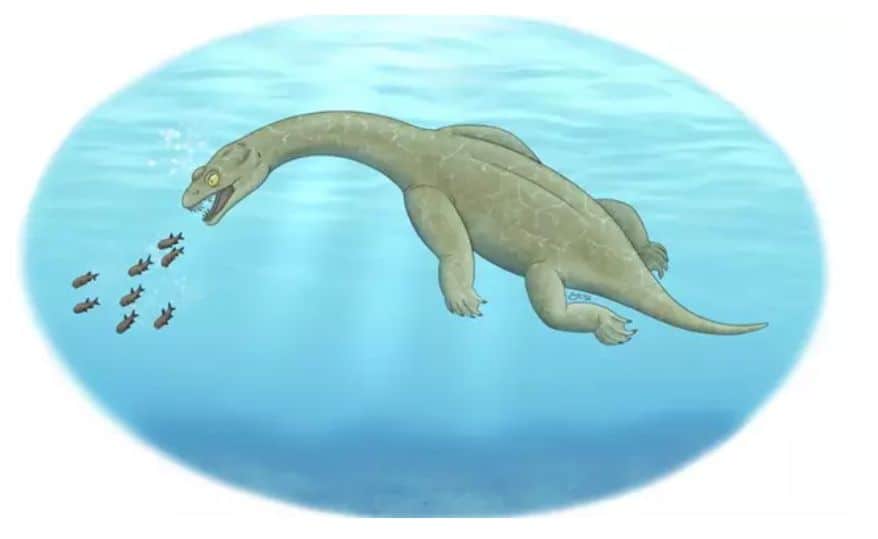240 million years ago, a small lizard-like predator hovered near the bottom of the edges in shallow water, capturing prey with fang-shaped teeth.
A short, flat tail, used to maintain balance, helps identify it as a new species, according to research published in the Journal of Vertebrate Paleontology.
Paleontologists at the Chinese Academy of Science and the Canadian Museum of Nature have analyzed two skeletons of a thin layer of limestone in two quarries in southwest China. They identified skeletons as Nothosauroid, Triassic marine reptiles with a small head, tusks, fin-shaped limbs, a long neck and usually an even longer tail, probably used for propulsion. However, in the new species, the tail is short and flat.
“Our analysis of two well-preserved skeletons reveals a reptile with a wide, pachyootic body (denser bones) and a very short, flattened tail. A long tail can be used to move through the water, generating thrust, but the new species I’ve identified was probably better suited to hang around the bottom in a shallow sea, using its short, flattened tail to maintain balance, like an underwater float, allowing it to conserve energy while searching for prey,” says Dr Qing-Hua Shang of the Chinese Academy of Sciences.
Scientists have named the new species Brevicaudosaurus jiyangshanensis, from Latin ‘brevi’ to ‘short’, ‘caudo’ for ‘tail’ and from Greek ‘sauros’ to ‘lizard’. The most complete skeleton of the two was found in the Jiyangshan quarry, which gave the specimen its species name. It’s just under 60 centimeters long.
The skeleton gives more clues about its lifestyle. The forelimbs are more developed than the hind limbs, suggesting that they played a role in helping the reptile swim. However, the bones of the forelegs are short compared to other species, limiting the power with which it could pass through water. Most of its bones, including vertebrae and ribs, are thick and dense, further ccontributing to the reptile’s robust and robust appearance and limiting its ability to swim quickly, but increasing stability under water.
However, thick, large-mass bones act as ballast. What the reptile lost in speed, gained with stability. Dense bones, known as pachyostotic, may have made it floating neutral in shallow water. Along with the flat tail, this would have helped the predator float motionless underwater, requiring little energy to stay horizontal. Neutral buoyancy should also have allowed it to walk on the seabed in search of slow-moving prey.
Very dense ribs may also suggest that the reptile had large lungs. As the lack of a firm body weight support suggests, nothosaurs were oceanic madmen who needed to get to the surface of the water in search of oxygen. They have nostril on their snouts they breathe through. Large lungs would have increased the time the species could spend underwater.
The new species presents a bar-shaped bone in the middle ear called stapes, which is used for the transmission of sound. The stapes was usually lost in other Nothosaurus or marine reptiles during conservation. Scientists had predicted that if a stapes was found in a Nothosaurus, it would be thin and thin as in other species of this branch of the reptile family tree. However, in B. jiyangshanensis it is thick and elongated, suggesting that it has good underwater hearing.
“Perhaps this small slow-swimming marine reptile had to keep an eye on large predators while floating in the shallow waters, as well as being a predator in itself,” says co-author Dr. Xiao-Chun Wu of the Canadian Museum of Nature.
